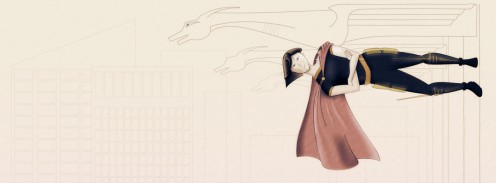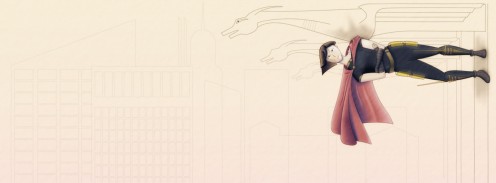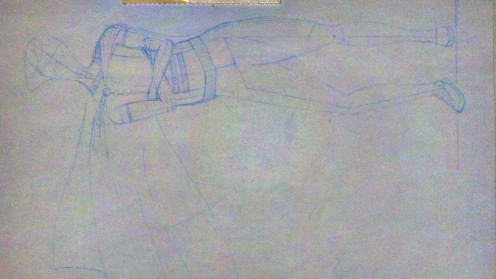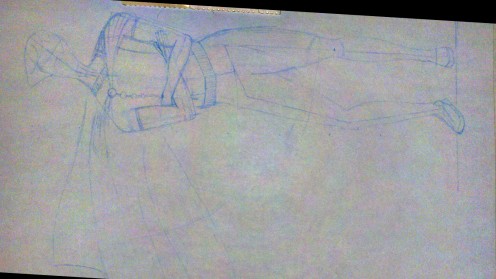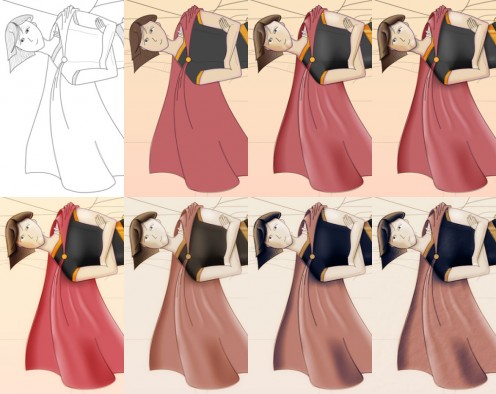As always happens with postmortems for projects with no set deadlines, it feels good to write that subject line. So on to the dissecting.
making it up as you go
It’s not like I sat down twelve years ago and said hey, I’m gonna try to draw and sell a full 78 card Tarot deck. So I can’t really evaluate this in terms of how well my final product matches my intent. However, I’ve definitely learned the importance of good planning, as there was no real planning for this product. There was an awful lot of backtracking here. Some things I should have done better:
- If there’s any possibility that what I’m doing will make it into print, I should make sure my Illustrator files have print-quality raster effects. Changing the effects resolution after the artwork is mostly finalized is a huge pain.
- Keep separate images in separate files. While it’s convenient to have everything in one place, Illustrator crashes frequently on my large, multipurpose files.
- Keep files organized. Which is to say, I totally didn’t do that here… just finding the files I needed for any given task became rather difficult late in this process.
those jargon-free rules
Looking over my rulebook, everything feels reasonably straightforward. Unfortunately, I never really had a Tarot newbie try reading the rules and tell me if they made sense. Really should have done that.
In terms of layout, I’m not thrilled with the layout of the instructions, but given the constraints I was under (limited to three separate, unordered sheets of paper) I think it’s adequate. Not good, but adequate. Again, lots of backtracking here as I figured out what format I would need.
the ilustrations
I really can’t think of any changes I’d want to make to the illustrations, looking over them again. Maybe the backgrounds could be better, more textured. But my only real complaint is that, because I changed the contrast fairly late in the process, you can see some slight banding on the background.
(Okay, I can see slight banding. Most people probably won’t notice.)
Anyway, I do need to learn how to do color management better so I’m not changing contrast in Photoshop at the last minute.
web site
Because of some errors I made in my scripts, the web site for the product was effectively down for a few days shortly after launch. Whoops.
I made the site years ago, and barely changed it for the product launch. I briefly considered moving it to WordPress like my personal site, and in hindsight, I probably should have done that. I just don’t think it’s worth my time trying to maintain custom scripts for a web site; most of this stuff is pretty cookie cutter, and the nice thing about a third-party CMS is, a lot of people have tested it for you. It’s all standardized, and easy to get help on.
dead ends
So for a long while, I was considering getting this printed through a local professional printing press. The minimum order would have been like 100 or 200 decks, with an upfront cost of two or three grand.
While everyone I talked to at the printer was friendly and helpful, I’m really, really glad I didn’t go that route. Did you know that playing cards aren’t just colored pieces of card stock? They’re coated in plastic, and have this thin layer of graphite in the middle that gives them a lot of springiness.
I didn’t realize this until I’d shrugged off professional printing as an option and bought my own paper cutting machine and nice color printer with which to do everything myself. And I got some nice cardstock and printed out cards… and they didn’t feel like playing cards. At all. They didn’t slide against each other right, and they didn’t bend right. And while your typical Tarot cards and board game cards don’t feel nearly as nice as nice playing cards, you can still shuffle them and slide them against each other, which isn’t a guarantee at all with any random card stock.
I would have been terribly disappointed if I’d only realized this after dropped a few thousand dollars on printing a hundred of these things. So while I didn’t end up using my own equipment for this, having it and trying it out taught me a lot about printing.
So I’m happy I went with The Game Crafter, with their nonexistent upfront costs and suitable-for-games card printing. There’s no telling how cranky I would have gotten collating and packing all those boxes myself, and I’m glad I didn’t have to set up a storefront. Again, this is pretty cookie cutter web site stuff and I’d just as soon have someone else do it.
to sum up
I’m sorta surprised I got this out at all, considering how long it’s been in development. But overall, it was a good learning experience, and I’m super excited about printing an actual board game through The Game Crafter now. And making a card-reference tablet app in Unity or something.
And trying to get this in real stores. In many ways, this project is just beginning.
